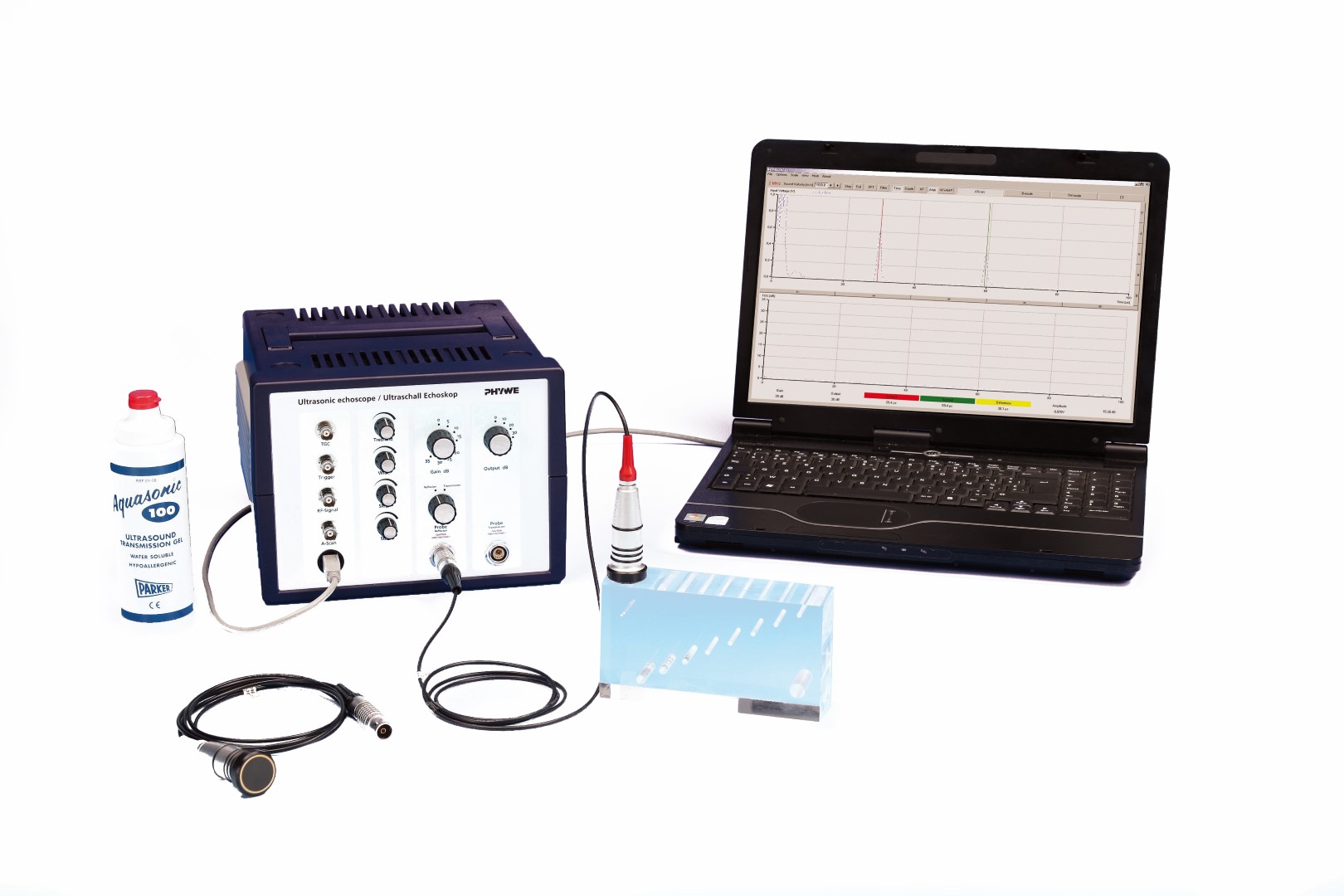Principle
An ultrasonic wave transmitted in a sample will be reflected at discontinuities (defects, cracks). From the relationship between the time of flight of the reflected wave and the sound velocity, the distance between ultrasonic transducer and defects (reflector) can be calculated. Position and size of these defects can be determined by measuring in different directions.
Benefits
- Exciting experiment to teach the basics of ultrasound imaging (echography)
- Diversified experiment with several measurement methods
- With the same setup B-scans can be performed
- Experiment setup can be upgraded for additional experiments in medical imaging and for echoscopy applications in material sciences
Tasks
- Measure the longest side of the block with the caliper and the time off light of ultrasound wave for this distance with the 2 MHz probe.
- Calculate the sound velocity.
- Measure the position and the size of the different defects of the test block with the caliper and the ultrasound echography method.
Learning objectives
- Propagation of ultrasonic waves
- Time of flight
- Echo amplitude
- Reflection coefficient
- A-scan
- Flaw detection
- Non destructive testing (NDT)
- Ultrasonic transceiver

